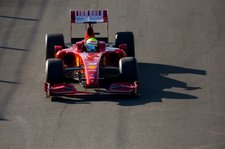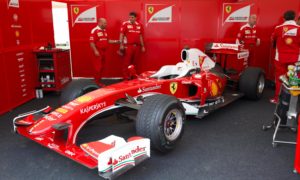 In the past week or so F1 fans have seen two or three controversies emerge over the legality of the 2009 cars. Forumula1.com delves deep into the grey area between competitive innovation and rule-bending as Formula One ushers in a revolutionary new technical era.
In the past week or so F1 fans have seen two or three controversies emerge over the legality of the 2009 cars. Forumula1.com delves deep into the grey area between competitive innovation and rule-bending as Formula One ushers in a revolutionary new technical era.
First came Ferrari s visible exhausts, which are widely believed to be illegal and so illegal, some say, that the team withdrew hastily to Mugello to remove them (see HERE). And then came the Williams and Toyota diffuser controversy (see HERE). These teething problems are nothing particular out of the ordinary in a season where regulation changes are a big talking point. But do the problems mean everybody is in for a season of technical squabbling?
From time to time F1 has a season where technical controversy abounds. Is so-and-so using traction control? Does so-and-so have a mass damper? Are so-and-so s front wing endplates too high? And so on. Recriminations become the norm, and races are sadly decided in the stewards office, or even worse in an FIA courtroom, rather than on the race track.
This is somewhat inevitable, however, considering the sheer amount of technical expertise the engineers have, and the resources they have available. It s effectively taking the world s most talented people in their field, putting them in a room and asking them to solve a set of problems. If they think they can get away with it, they are going to bend, find loopholes in and sometimes even break the laws.
In 1994 when traction control was banned, Benetton were widely suspected of using launch control and an illegal system to regulate the engine s power supply to the drivetrain. Nothing was proved in that case, but many suspected the team of having bent the rules somewhat. Nowadays, many believe that F1 suffers in the same way as athletics is alleged to do. In that sport. performance-enhancing drugs are said to be streets ahead technologically of the tests designed to find them. Similarly, in F1 it s the design gurus and technical wizards who have had years of the best technology and funding known to humanity, against a less knowledgeable and worse-paid set of stewards and inspectors.
The solution to this is twofold. For one, budgets must be reduced. Some standardisation of parts which has tentatively been agreed on would reduce the opportunity for cheating, as would reduced costs. Secondly, the FIA should tighten up its regulations why not have an ex-engineer (for example Mike Gascoyne) on a panel to lay down the law in minute detail – before the cars are designed.
But the truth is that as long as F1 remains a team sport, in which the cars are the stars as much as the drivers – fans can expect shady goings-on behind the scenes. As long as performance-determining parts are made by each team separately, one of them is going to be better and slightly less legal than another. This is what makes the sport interesting. If fans didn t have anything to complain about, or suspect another team of doing, the sport would be a duller affair all round.








